the lion’s tale
Small class sizes give students an academic edge


the lion’s tale
Small class sizes give students an academic edge

Editors-in-Chief
Kaylah Goldrich
Lena Nadaner
Managing Editor, Copy
Ellie Fischman
In-Depth Editor, Director of Social Media
Ella Waldman
In-Depth Editor, Director of Staff Development
Lilli Libowitz
News Editors
Simon Albert
Adin Halbfinger
Features Editors
Jonah Beinart
Lily Rulnick
Opinion Editors
Aliza Bellas
Ari Kittrie
Arts and Entertainment Editors
Stella Muzin
Cati Werbin-Gradel
Sports Editors
Gigi Gordon
Aaron Waldman
Ari Werbin-Gradel
Illustrator
Libby Hurwitz
Taylor Polonsky
Reporters
Ellie Levine, Yaeli Greenblum, Sasha Karasik, Matthew Steindecker, Julia Rich, Ari Blumenthal, Eitan Rattner, Ruby Kotok, Penelope Terl, Talia
Loeffler, Gila Safra, Tyler Portnoy, Sadaf Zadeh, Maiya Blumenthal, Eliana Wolf, Sophie Schwartz, Mia Forseter, Maya Greenblum, Vivi Ducker
Faculty Adviser
Jessica Nassau
Adviser Emerita
Susan Zuckerman
19
23
25
26
They did not receive credit. Reporter Mia Forseter’s name was mispelled on page 25. We apologize for the errors.
The new staff of The Lion’s Tale is kicking it off with our inaugural edition this month. We are looking forward to an innovative and productive year as Editors-in-Chief. Our departed seniors left high expectations for us, yet we strive to continue the magazine’s exceptional reporting and delivery of news. Although this task seems daunting as we sit in our first production as Editors-in-Chief, we are so excited for the opportunity to bring our own ideas to the paper.
In this issue, we implemented a couple of design changes, including the usage of a new font for the body text and the overall look of the pages. In addition, we have implemented new internal systems to increase efficiency and productivity. We are very excited about these changes but are open to feedback.

This transition prompts us to reflect on our Lion’s Tale journey. We began as wide-eyed freshmen in Journalism I and II, then we became reporters, then section editors, where we developed our writing and design skills, and finally editors-in-chief. We know we will learn so much from our editors and staff and look forward to growing the community and paper.
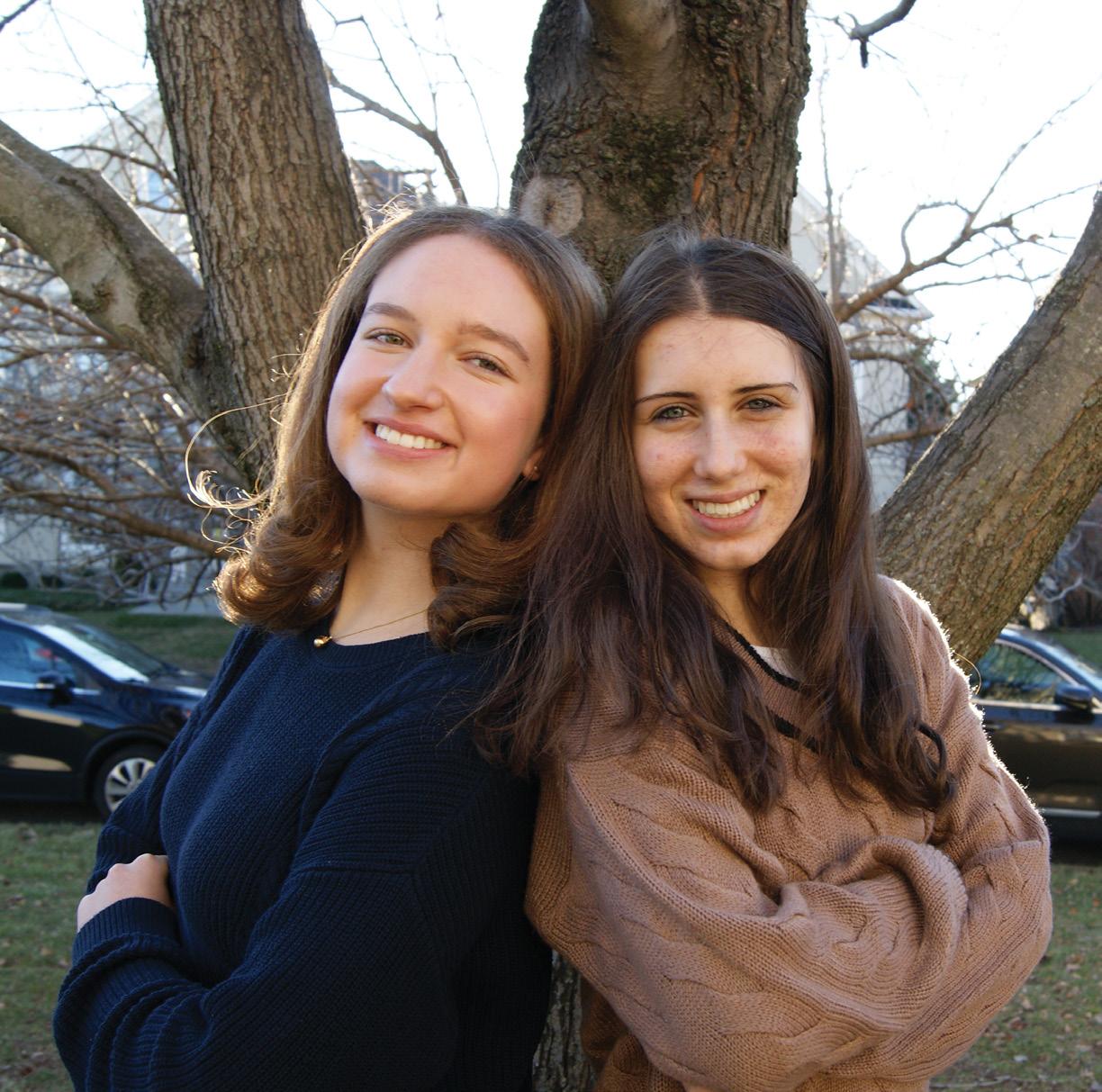
Sincerely,
Editors-in-Chief
As the student newspaper of the Charles E. Smith Jewish Day School, The Lion’s Tale is a public forum for student opinion and expression. All content is determined by students. Its purpose is to inform the CESJDS community and to express the views of its staff and readers. The staff has made every effort to ensure the accuracy and objectivity of its news. Signed columns reflect the opinion of the writer; staff editorials reflect the opinion of the majority of The Lion’s Tale editorial board. The Lion’s Tale staff
Whether it is covering breaking news about local antisemitism or the amazing community service projects our students pursue, we plan to continue to deliver accurate and timely news. As we gather in the Publications Hub for the first time with our new staff with confidence for the future, we are thrilled to bond and learn from each other. The new staff has shown incredible skill and dedication in working on this issue. We cannot wait for you to read these wonderful stories.
welcomes letters to the editor and guest columns, all of which must be signed. The staff reserves the right to refuse any material and may edit letters or columns for length, clarity, libel, obscenity and/ or disruptiveness. All other contents copyright of The Lion’s Tale. All rights reserved.
Submissions may be emailed to jdslionstale@gmail.com, mailed to The Lion’s Tale or brought to room 320.
The Lion’s Tale is funded by The Simon Hirshman Endowment for the
Upper School Newspaper and The Kuttner-Levenson Endowment for the Upper School Cultural Arts and Student Publications, and community advertisements. The Lion’s Tale reserves the right to refuse advertisements for any reason. The staff will adhere to the ethics policies of The Society of Professional Journalists and the National Scholastic Press Association. The adviser will be held to the Journalism Education Association’s Adviser Code of Ethics.

Anew form of artificial intelligence (AI) known as OpenAI began circulating in schools around the country, including CESJDS in early October. Unlike earlier forms of AI, such as Grammarly, that can correct grammar, punctuation and readability, OpenAI can generate text in a wide range of styles and for different purposes with remarkable precision, detail and coherency.
“I don’t think teachers can recognize when I copy and paste from AI, especially if I take the answer I got from AI and put that into a different rephrasing website,” an anonymous student said. “I have been using AI for several months now and I have not been caught. My teachers haven’t expressed any suspicion of my work and using AI has actually improved my grades.”

While JDS has no plans to prevent students from using AI, other schools in the U.S. have taken action to limit its use. According to NBC News, all New York City public school devices and networks OpenAI was banned in an attempt to preserve academic integrity. Despite this, many schools, in-
cluding JDS, are working instead to educate students on how to use AI in productive ways that will benefit them in their future.
“I think my view of artificial intelligence is generally positive,” High School Principal and Upper School Campus Head Lisa Vardi said. “Rather than how can we stop students or block students from using it or how can we put filters or how we can be sure students are doing their own work, I think we have to lean in and say, ‘this is happening, and we need to teach students how to use it productively.’”
Some JDS faculty and staff have convened a few times to discuss how AI can be used effectively; however, at this point, conversations are still in the preliminary stages. Teachers are becoming increasingly aware of AI through these meetings, and some departments have taken it upon themselves to explore its capabilities.
There have been no explicit decisions made by the faculty and administration, and no formal conversations with the entire student body regarding how it should be used. As a result, many students have used AI for class, submitting responses for grades.
“OpenAI is definitely my pre-
ferred form of AI because it has answers for everything,” the anonymous student said. “Other than using AI for entertainment purposes, like asking it to write you a song and seeing what it comes up with, it’s also just very detailed. I can even ask AI to cite sources in a certain style, and it will come up with various links and citations. I haven’t asked AI a question that it hasn’t been able to answer.”
While AI has astounding capabilities, nothing can compete with the human mind. The student noted that while AI can often provide answers to objective questions, the technology cannot replicate humans.
Therefore, to ensure students are producing their own work, some departments, specifically the history department, use an AI detector.
“The key is for a student to use AI to increase the power and capabilities of your own brain, rather than doing your thinking for you,” high school history teacher Carl Atwood said. “Use AI to evaluate and question your own arguments, identify new avenues of research for you to engage in or expose you to new perspectives or writing styles.”

is the amount the industry is set to grow over the next eight years
97 million people will work in the AI space by 2025
83% of companies claim that AI is a top priority in their buisness plansWant a taste of OpenAI? Scan this QR code for a review of this article.
Clustered in the gym, Lower School students learn about poverty in America at their monthly morning meeting. Each month, they tackle a new topic in relation to diversity, equity, inclusion and justice (DEIJ). January’s topic was poverty awareness and February’s was Black History Month.
In addition to monthly school-wide morning meetings, the Lower School had a DEIJ Day of Learning on Dec. 22. Students focused on recognizing and breaking stereotypes about marginalized groups.

These initiatives are emblematic of an increased focus on providing diverse and inclusive learning experiences at CESJDS. Activities range from reading more diverse picture books to kindergarteners to discussing diversity in Israel with fifth graders.
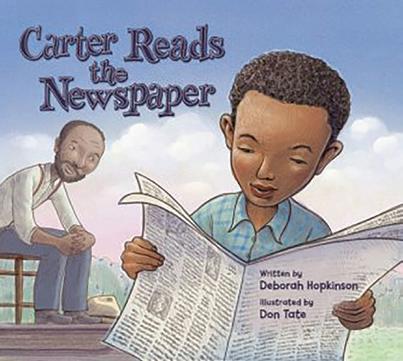


Principal Rabbi Matthew Bellas said that DEIJ education is necessary as a part of teaching basic values to JDS students.
“I often come back to the basic saying, ‘Everything I need to know I learned in kindergarten,’” Lowe School Principal Rabbi Matthew Bellas said. “You learn how to share, you learn how to be a good friend and you learn how to care for other people.”
According to Dr. Kimberly Sherk, the Lower School Language Arts, Social Studies and DEIJ Coordinator and Sarah Roark, the Lower School Head Media Specialist and T’filah Specialist, the Lower School strives to be inclusive in their media. For instance, they try to find books that represent different groups based on “physical ability, body type, race, religion, culture, gender, age, socio-economic status and family structure.”



Aside from more structured curriculum adjustments, a large element of the Lower School’s changes regarding DEIJ revolves
around addressing natural questions that students have. A lot of these questions center around gender identity, which is Lower School Assistant Principal Rebec ca Prigal’s primary focus when it comes to DEIJ education.
“[Topics surrounding gender] come up organically because children grow up and develop at dif ferent stages of their lives in a lot of ways related to their identity,” Prigal said.
According to Sherk, DEIJ initiatives at the Lower School have been successful and have mostly received positive reception from the JDS community. At the same time, Sherk said that she has faced some challenges in finding research about DEIJ education for very young students.
“By the time we get to fourth or fifth grade, it’s much easier,” Sherk said. “But making sure we approach topics in a way that students are ready for… [and] finding good research for the younger kids is the most challenging part of it for me.”
Though most parents are enthusiastic about the Lower School’s DEIJ initiatives, according to Bellas, a small percentage have expressed concerns. Some parents worry that these changes are politically motivated. While it is infrequent, Prigal said that there have been parents who have had their children opt out of lessons about gender inclusion.
Minor backlash aside, according to Vice-President of the Board and Co-Chair of the DEIJ Parent Committee Brian Liss, these issues are an extension of the education that students already receive at JDS.
“From my perspective, DEIJ is not a political issue,” Liss said. “It’s reflective of our core values and the school deals with DEIJ not from a political perspective, but from an educational perspective.”
Before seniors step out into the real world, they attend a series of workshops on practical topics not covered in the school curriculum. Workshops were held a week after the seniors’ last classes between Jan. 26-30, and covered a large array of topics including financial literacy, drug and alcohol abuse, the rise of antisemitism on college campuses and healthy relationships.
According to Dean of Students Roslyn Landy, the workshops provide further education that seniors do not use or necessarily learn during high school in a classroom setting, but will need in college and beyond.
Siyyum is a culmination ceremony for the seniors that happens the Friday before graduation. Siyyum was held at B’nai Israel Congregation on Feb. 10.
At Siyyum, members of the graduating class gave a Dvar Torah, and some students sang or played an instrument during the few musical preformances interspersed throughout the ceremony. Some students also received awards for academic excellence and community achievements. Landy said these are awarded at Siyyum rather than at graduation to avoid overshadowing the big accomplishment for every senior, which is graduating high school.
Graduation was held at Washington Hebrew Congregation on Feb. 12. This marked the very end of high school for the seniors and is the final step in their JDS careers before most of them head off to Israel for the Senior Capstone trip.
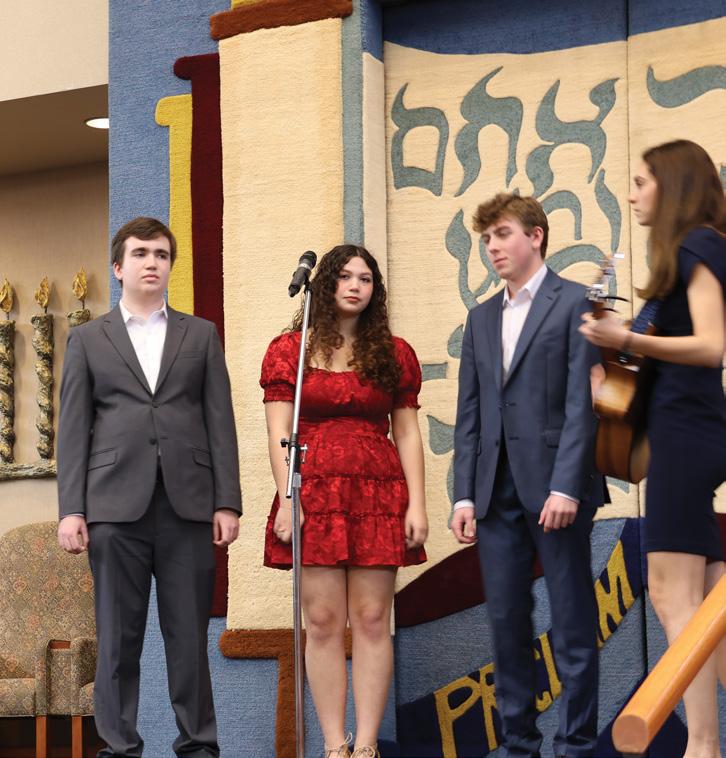
The ceremony consists of speeches by the head of school, Rabbi Mitch Malkus, and a few others, but the longest speech is the cantada. The cantada is written and delivered by the graduates and summarizes their journey through JDS from kindergarten to graduation.
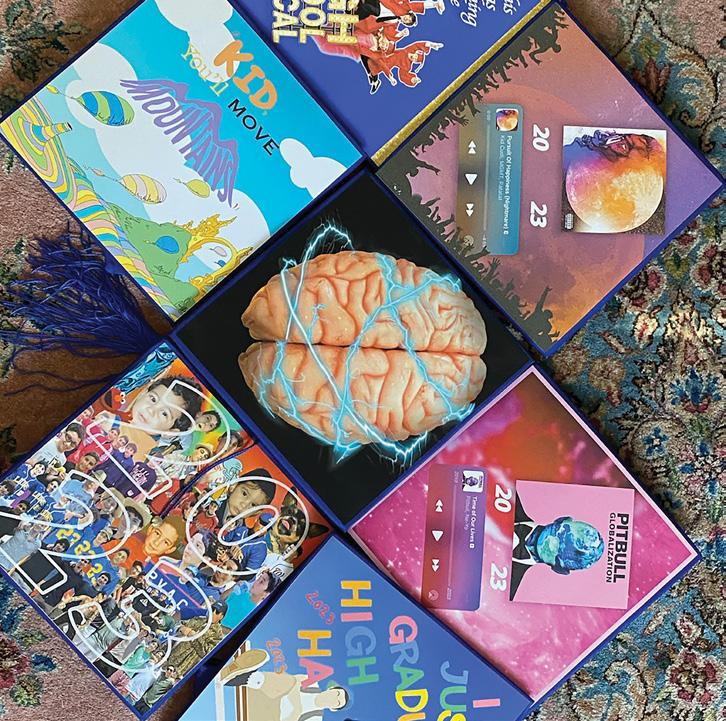
“I don’t think there’s a nicer and more personal high school graduation anywhere; they are usually somewhat boring,” Landy said.

Prom is a night that students dream of from the moment they start their high school journey. The evening began with pictures at Kenwood Country Club. Pictures were followed by Prom at the Marriott Hotel in Rockville, with After-Prom taking place at CESJDS. After-Prom is a more relaxed hangout for students after the excitement of Prom.
Landy said that After-Prom is held at the school to prevent late night car accidents, a practice started in Montgomery County Public Schools which JDS later adopted. Prom is exciting for seniors as it celebrates their high school careers coming to a close.



“We’ve finished classes, but [highschool] doesn’t feel over yet, but by the time we have Prom, it feels like graduation is right around the corner and we’re gonna be done,” senior Devorah Freeman said.


Every day as news notifications pop up on our screens, they bombard us with tragedy. Whether it be school shootings, antisemitic incidents, catastrophic floods, tornadoes or the possibility of nuclear war, they are too frequent to ignore. These events are important and should be reported. However, for the sake of our mental states, we should also be getting a daily dose of good news.
Media outlets are inclined to feed their audience negative news because it can increase viewership. “News has long centered on negative things because it engages our fear reflex and hence is generally more attention-grabbing,” according to The Guardian. Humans are hardwired to spot threats to our safety, so we are more likely to click on a negative headline than a positive one.
This sequence of consuming negative news has led to almost 70% of Americans feeling overwhelmed by news content and 56% of American adults saying the media is a source of stress for them, as reported by The Washington Post.
Establishing a balance between good and bad news can combat feelings of stress and anxiety.

As students with a rigorous course load and plentiful extracurriculars, we should not further afflict our mental health with unnecessary anxiety about the world. In fact, reading positive news may lessen our stress levels and boost our daily moods.
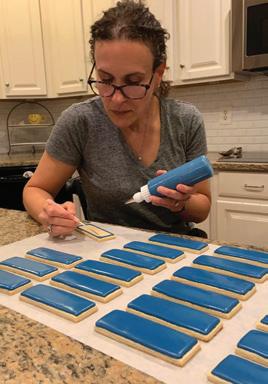
According to The Washington Post, intaking positive news can boost happiness and emotional resilience. Hence, they offer The Optimist, an email thread of inspirational stories twice a week. In addition, Good News Network is a website, app, newsletter and weekly podcast dedicated to publishing feel-good stories daily. Many mainstream news sources also have pages dedicated to positive news, such as Fox News and The Huffington Post. Since news keeps us informed as citizens, it is imperative that we don’t shy away from the grimmer news stories. However, heavy stories can be reported with a solution-based angle. For example, a story about a deadly
car crash can include steps the local government will take to prevent accidents in that area. This method of journalism gives the audience a sense of optimism, hope and empowerment while giving them a brighter perspective on dark events.
The Lion’s Tale promises to continue publishing relevant, balanced and timely articles pertaining to events in our community. But as much as we tend to latch onto the negative stories, it is crucial, for all of our sakes, that we strive to cover a variety of good and bad events as well. We will aim to celebrate the good in our community, from the students who raise money for Leukemia treatment to the teacher that is a professional salsa dancer. News doesn’t need to be either blindly optimistic or fatalistic. Here at the Lion’s Tale, we seek a balance.
“Positive news isn’t exclusive to silly pet videos; it can be encompass any news presented with a hopeful tone.”
The Senior Capstone Israel trip is the culmination of our CESJDS education. It’s what students are taught to look forward to beginning in kindergarten and is a core part of the JDS experience. Yet, now, in my junior year, one year from the trip, my family found itself lacking information about it, particularly the cost.
There are two factors that make senior year tuition different from a typical school year. Because Alexander Muss High School in Israel runs the Senior Capstone Trip, the tuition is managed separately from JDS. Thus, students who normally receive tuition assistance cannot receive aid for the cost of the capstone trip, although there are JDS-sponsored endowed funds to help families pay for the trip.
As for tuition processed through JDS, it is halved for senior year because seniors only attend for one semester. Therefore, according to an email sent out to parents by JDS, families who receive tuition assistance for a full year may not qualify for tuition assistance senior year.

Instead of being alerted of this at the beginning of high school, or even when families first join JDS, 11th grade families received an email with this information a couple of months before the tuition assistance application deadline. This email suggests that families should have proactively started discussing, planning and saving for the trip costs in freshman year. But if we were not actively made aware of this information, how could we have known to plan for it?
Director of Enrollment & Tuition Assistance Orna Siegel said that in the past, JDS has tried hosting family meetings for high school parents with information on the Senior Capstone trip. However, she said that these were not well attended, and therefore not run anymore. This year, the administration sent out an email
to all parents of ninth through 11th grade students who receive tuition assistance providing information about the trip, which is a step in the right direction to making this information more accessible.
According to Siegel, last year and this year, an average of 14% of seniors chose not to participate in the Senior Capstone Trip.
“There are a certain group of kids who choose not to go on the trip for all sorts of reasons. Sometimes financial, sometimes not financial… I would say the majority of kids who want to go on the trip find a way, but it’s not always easy,” Siegel said.
While I think sending out an email to all high school parents is definitely a good start in improving communication, I believe that more can be done. Although this email caught the attention of my parents, parents of freshmen who are probably not thinking about the trip may let this email get lost in their inboxes.
In addition to sending out an email to all high school parents with information about the trip, JDS should specifically alert freshmen parents by sending out individual emails to the families that rely on tuition assistance so they can be proactive in preparing for senior year.
I understand that no matter how much communication occurs, there will always be families that will not be able to afford to send their kids to Israel. However, I believe that through better communication on both sides, which JDS is beginning to do, at least one more student will have the opportunity to go.
which can prepare teens for positive future relationships. Other lessons that high school relationships teach include maintaining strong communication, understanding the importance of honesty and how to set and respect boundaries.
When discussing a breakup in my grade, my friends and I quickly conclude that high school relationships are not meant to last. However, this does not mean that high school romances are not worth it just because they come to an end.
The goal of any relationship is exploration. As teens, we are discovering who we are, what we like and whom we find comfort in. Relationships push us to be vulnerable and learn about ourselves and our partners more intimately. Without this experience, we could miss out on vital experiences to our young lives.
Additionally, high school relationships teach teens how to maintain healthy relationships,
According to Dr. Furman, a professor of psychology at the University of Denver, “romantic relationships can also be significant sources of support that offer teenagers fun and companionship, help them forge mature identities and offer them practice in managing emotions.”
This additional socialization is helpful later in life, and according to the U.S. Department of Health & Human Services, “[high school] relationships also can play a role in supporting youth’s ability to develop positive relationships in other areas including: in school, with employers and with partners during adulthood.”
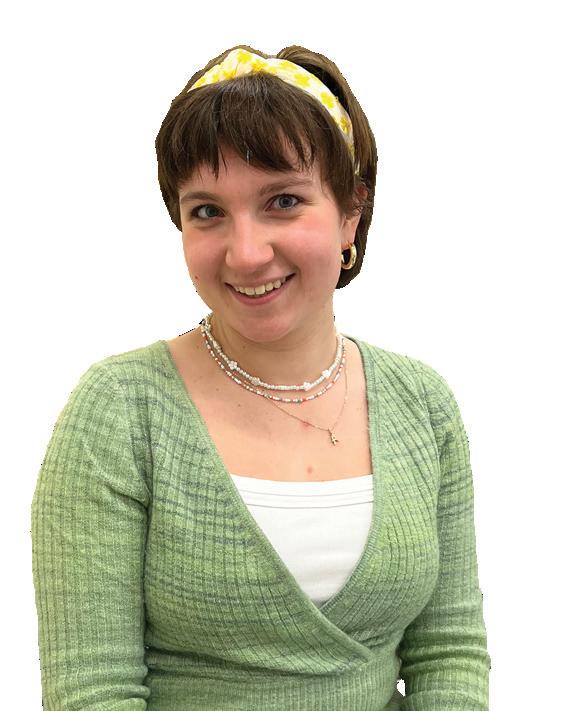


Some CESJDS students believe this aligns with their experience.
“[My] longest relationship was three years. It’s hard to explain how [the relationship] made
1%
me happier, but my mood just gets better when I’m able to spend time with someone I care about,” Junior Sam Miller said.
Junior Gaya Newman, who is in a long-term relationship, agrees with Miller that her mental health has been positively impacted by her relationship.
“I learned how to love myself actually, my boyfriend made me love myself more and feel better about my body…He’s always there by my side with me to help me with problems with my family and my friends,” Newman said.
High school relationships are the best way to discover your likes and dislikes for relationships later in life. Dating as a teen allows you to learn more about someone else, while still discovering who you are and what makes you happy.
While I understand that high school relationships are notorious for being short and even ending painfully, these relationships allow teenagers to discover who they really are. It is important to look past this pain and understand that these relationships come with benefits as well.
“Never put it in front of school and your family ... you could miss out on the times to bond with family, to hang out with your friends, or to have some time for yourself.”
35% of teens have been in a relationship of some kind
64% have never been in a relationship
declined to answer
-Sophomore Adam Bachrach
“You’re both still figuring out who you are ... it’s really important to communicate well and be supportive of one another”
-Sophomore Abigail ChesmanInformation taken from the Pew Research Center

With hormones raging and constant interaction with peers, it can be difficult for teens to refrain from engaging in romantic relationships. However, these high school romances often become detrimental to mental health and affect teens more negatively than positively. It is vital to consider these effects before entering a relationship as it is easy to get caught up in high school drama.
From a medical perspective, teens are often not yet developmentally prepared to be in romantic relationships.
According to Newport Academy, the part of the brain responsible for emotional regulation and reasoning does not fully mature until your mid-to-late 20s. Undeveloped emotional regulation
can lead to intense emotional vulnerability, risky behaviors and dangerous actions when teens enter high school relationships. Additionally, engaging in relationships can contribute to mental health challenges for teenagers. Newport Academy adds that oftentimes, teens exhibit symptoms of anxiety, stay up late into the night, experience extreme mood swings and often eat less than normal when they are in this intense state of puppy love.
“Both involvement in and the dissolution of romantic relationships may increase youths’ vulnerability to depressive symptoms due to the novelty and difficulty of the emotional challenges youth face in managing these relationship events,” the Journal of Clinical Child and Adolescent Psychology wrote.



It is also important to note that being in such a small school environment can cause issues of intrusiveness on people’s personal business. With such a tight-knit community, it can become easy to invade peers’ privacy, which can hurt their relationship.
This sense of peer pressure
“Make sure you take time for yourself ... if you can’t make a full time commitment to yourself, it’s even harder to make a commitment to someone else.”
-Junior
Abby Greenberg55% of teens have flirted or talked to a person of interest
is unhealthy and can affect teens detrimentally. Once we exit the high school “bubble,” I think that circumstances will change and allow for more breathing room in romantic relationships.
While I understand that some might think that relationships can provide growth in communication skills and overall human development, I would argue that teens instead can learn these skills through other forms of connections with people.
50% of teens have showed romantic interest in someone by befriending them on social media
Family connections and friendships are relationships that allow teens to use the same tools of communication while experiencing love that comes without the pressure of romantic relationships.
The medical and social struggles that come with high school flings can be very detrimental in students’ lives. Before you decide to enter into a teen romance, I urge you to step back and consider the negative effects that it will have on your life, and truly consider whether or not that kind of relationship is right for you at this time in life.

“Have really good communication between people to really understand each other.”
-Freshman Ari Solomon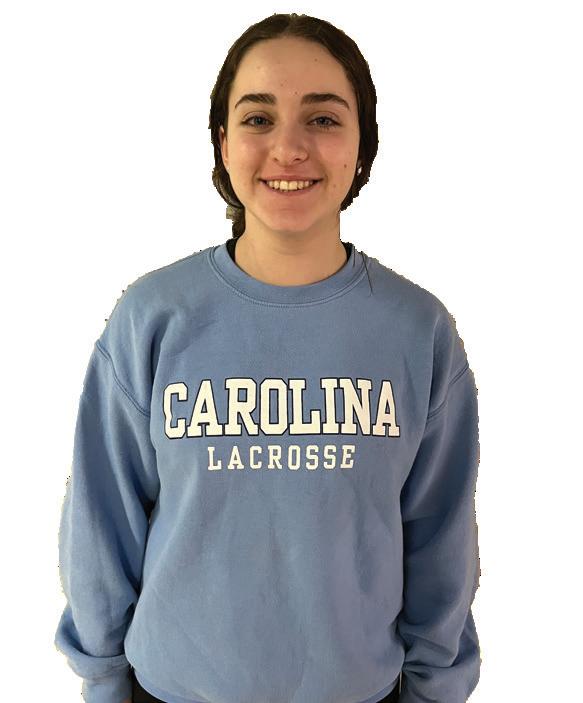
Small class size gives private school students an academic edge
 Ella Waldman In-DepthEditor, DirectorofSocialMedia
Lily Rulnick FeaturesEditor
Ella Waldman In-DepthEditor, DirectorofSocialMedia
Lily Rulnick FeaturesEditor
The national average class size for public schools is 24 students. The average class sizes for Walter Johnson High School and Sherwood High School, two local public high schools, are 26 and 21 students respectively (20192020). Yet, the average class size at CESJDS is 13 students. What are the implications of this variation, and how does class size positively or negatively impact students?
Studies surrounding ideal class size have circulated for years, coming to various conclusions. However, the general consensus is that smaller classes pose many benefits. According to eSchoolNews, some of these include improved teacher-student relationships, more customized instruction, collaboration in the classroom and teacher retention.
These first two advantages draw from the teachers’ ability to provide more individualized attention. When teachers have time to address each student individually, they are able to build stronger relationships with their students. Additionally, with fewer students, teachers have more time outside of class to offer help, thus improving these connections. Teachers can gain a better understanding of the teaching methods and speed of instruction that fits their students’ needs.
Sophomore Mia Endelman, who has been home-schooled, attended public school and is a current JDS student, attests to the ad-
vantages of small class sizes and improved teacher relationships.
“You definitely learn better with small classes…because the teacher can pay individual attention to you,” Endelman said. “In a class of 30 people, you’re either moving too fast or too slow.”
Howard Community College English professor Helen Clark, and former English staff support at Rockville High School, has seen first-hand how difficult it is for educators to connect with students and determine what they are struggling with in such a large classroom setting.
“I definitely believe very strongly that the relationship between teacher and students is really vital to students’ engagement,” Clark said. “When you have a really big classroom, really experienced teachers that are like super wizards can zero in on some [struggles], but it’s just a lot harder because you have so much going on, so much content that you need to teach and so many papers to grade.”
Smaller classes not only impact the relationship teachers have with their students, but they also impact the relationship students have with one another. eSchoolNews explains that increased collaboration in the classroom emerges when students are more comfortable interacting with each other.
“It’s easier if you’re friends with everyone in the classroom, and you’re having a class discussion, it’s easier to open up
and talk,” Endelman said. “Not so much in a big class where you know half the people, but not the other half, so you get nervous with the other half.”
Aside from student experience, it is also important to note that 10% of teachers cite class size as their reasoning for leaving either their schools or profession entirely, according to eSchoolNews.
According to Academic Dean Aileen Goldstein, JDS is aware of the research regarding class size and takes this into account when building schedules. JDS classes are capped at 18 students. Any classes that surpass the limit require permission from the principal. The largest class this year, a section of World History I, has 21 students. In contrast, Montgomery County Public School classes cut off at 29 students for English classes and 32 students for all other classes.
“One of our goals as an independent school is to really provide as much individualized attention as we can in order to invest in meeting the individual needs of each student,” Goldstein said. “The smaller the class and the better the student-teacher ratio, the more you can give attention to each individual student and their needs at the same time.”
However, the school also recognizes the disadvantages of having a class be too small. The smallest class running this year is two students.
“We also are looking for crit
“One of our goals as an independent school is to really provide as much individualized attention as we can in order to invest in meeting the individual needs of each student.”
-Academic Dean Aileen Goldstein
ical mass, because we have put tremendous value in the group experience and in the rich conversation that comes when you have a critical mass in the classroom together,” Goldstein said. “Because of our emphasis on pluralism and our emphasis on critical thinking and processing, you really need to hear a multitude of perspectives, and so there’s that sort of a healthy balance in between.”
Smaller class sizes enable students to receive their education in a more intimate learning environment, which provides many benefits to the college process.
JDS provides its students with a bounty of resources for college preparation through its college guidance department. However, another element of JDS education that prepares students for the college process is classroom engagement.
Sue Rexford explained that classroom dynamics can help students prepare for both standardized tests and written applications, in a way that external help cannot.
“… [What I think] JDS does really well, by the way, is critical analysis, critical thinking, close reading skills: the types of things that you do in many of your classes and you don’t even realize what a difference that’s going to make when you sit down to take a standardized test,” Rexford said.
With Rexford’s point of the JDS classroom preparing students for the college process in mind, the quality of the content is not the same when class sizes are larger. As part of the process of earning her Masters Degree, Sarah Leahy
What
of Marygrove College surveyed a group of teachers about their opinions on the impact of smaller classes on students’ quality of learning. In the survey, the consensus was that smaller class sizes allow teachers to spend more time focusing on “the curriculum being taught instead of discipline and other issues that are occurring around them.”
Not only are students in smaller classroom environments able to go more in-depth with their classroom time, but they are also able to receive more individual help from their teachers. This specialized instruction also helps with standardized testing and the overall college process.
Because of the individual relationships between students and teachers, students are able to use these connections when requesting recommendation letters, which gives students in smaller classes a very large advantage when it comes to the college process.
“Students who come to you and want [a recommendation letter] because you offer them a safe space, something that they’ve needed, whether it’s academically or emotionally, you have the rapport with them,” history and psychology teacher Matt Cohen said. “ … I feel honored by that process, to have kids come to me and say ‘will you write this recommendation for me,’ and it really does a nice job of culminating [the] relationship.”
Friendly conversations between students and faculty often fill the JDS hallways, the sort of small talk that enhances their relationships. This dynamic that is
13 students on average per JDS class
19 students on average per Quince Orchard High School class
21 students on average per Walt Whitman High School class
18.5 students on average per Richard Montgomery High School class
21 students on average per Montgomery Blair High School class
characteristic of JDS enhances the learning experience for teachers and students alike.
Cohen taught for four years at a public school in Chicago before coming to JDS. That background helps him appreciate the ease that comes with smaller class sizes at JDS. He believes that a smaller class helps both the student and teacher succeed, and allows for better connections in the classroom.

“It’s tougher when you have so many kids that you are trying to serve, and usually in public school there are a lot of kids way across the learning spectrum,” Cohen said. “Sometimes it can be tough to be able to meet all of those kids’ [needs].”
On top of the more visible differences between public and private school classes, Cohen also explained that smaller class sizes allow him to explore a variety of teaching styles and delve deeper into students’ interests.
Cohen was able to foster more quality relationships with his students when he had fewer students to teach at one time. Junior Sofia Guerson, who just switched to JDS from public school this year, agrees with this sentiment.
“I have a much closer relationship with my teachers and my other classmates,” Guerson said. “At JDS, there’s a lot more guidance, and there’s more support, so it’s more nurturing.”
At Walt Whitman High School, her previous school, she felt like there was little to no support from her teachers. By having the perspective of being at both a public and smaller private school, she said it was likely that her teachers had to sacrifice student relationships to manage the larger work-

size class do you prefer and why?
Junior Nate Shemony:
“I like smaller classes because I am able to get more individual attention and assistance from teachers.”
“Small classes are better because it’s easier to get teacher’s attention when I need help.”
load that came with teaching three or four times the students as the average teacher at JDS.
“[The teachers] just don’t have time for you because they have probably hundreds of students,” Guerson said. “If I wanted to go and ask them a question about something, they [would] usually try to answer it as fast as possible so they can get to the next thing. So, I had to figure things out by myself a lot.”
Despite all of the detrimental effects of a large class size, widespread class size reduction in public schools is not a simple feat. According to the Brown Center on Education Policy at Brookings, even decreasing the present average class size by just one student would cost the U.S. billions of dollars.
Teacher salaries account for a large element of that cost. There are approximately 3.2 million teachers serving 49.3 million students in public schools, corresponding to 15.3 students per teacher. Decreasing that ratio to 14.3 would require hiring 226,000 additional teachers. At an average teacher salary of $55,000, that would cost the US $12.4 billion a year, merely in salary costs. While the Brown Center on Education Policy at the Brookings Institution released these numbers in 2011, the data is similar in 2023. Adding more classes would generate a need for more classrooms, as well. For a decrease of average class size by one student, 225,000 classrooms would need to be added.
Clearly, an instant decrease in class size is unattainable, but the status quo has also proven prob -
lematic. As such, communities across the country are looking for solutions.
One such solution is a bill Maryland Senator Pamela Beidle is currently sponsoring. Maryland teachers want to include class size in contract negotiations with local boards of education, which is not currently permitted in Maryland. Beidle’s bill would give teachers that negotiation power.
Because class size is not a problem for JDS, teachers do not need to focus their energy on education reform and negotiations. That means that they can focus more on what really matters in a classroom: the students.
Teachers and students across the JDS community have attested to the difference a smaller class makes, and have expressed appreciation at the emphasis the school puts on creating these spaces.
Coming from a place of such academic privilege, it is important that members of the JDS community join the fight against overcrowded classrooms in local public schools. Consider raising awareness and advocating for legislation like Beidle’s bill, lobbying for more funding from state and local representatives, donating to local public school’s fundraising efforts, such as mulch and book sales.
JDS students are incredibly fortunate to have access to the resources and smaller class sizes that the school offers. When offered such significant supports, students should recognize and appreciate these advantages, and work to ensure others are given similar opportunities.

21.6 18.7 25.2
Grade 6-8 Teachers
23.6 20.5 27.7
Grade 9-12 Teachers
24.1 20.7 28.1
Current average class size
Ideal average class size
Point at which student achievement would be negatively impacted

“I like smaller classes because it is less stressful to participate because you can connect more with the people in your class.”
“Small classes are better because you get more one-on-one time with teachers and more personalized assignments.”Data from Primary Sources: America’s Teachers on the Teaching Profession 2012 survey of 10,000 teachers
& A with Yoav Favorite game? “Call of Duty: Modern Warfare II”
Ari Blumenthal Reportermore than a year after his move from Israel to America.
Favorite food? Sushi Q: A:
Q: A: Favorite brand? Nike Q: A: Favorite plane? F22 Raptor Q: A:
Favorite show? “Breaking Bad” Q: A:
Favorite sport? Ice hockey Q: A:
While most juniors are working on getting their driver’s licenses, Yoav Amit is aiming much higher - literally. For the past few months, Amit has been preparing to receive his pilot’s license.

Yoav began flying in non-commercial planes at the age of two. Inspired by his grandfather, a veteran of the Israeli air force, Yoav’s exposure to flying at a young age instilled a lifelong passion in him.
“His grandpa used to take him when he was very young on his flights,” Yoav’s mother Tali Amit, said. “I remember him starting [to show] interest young … and he was very excited about it.”
Yoav remembers his early experiences with his grandpa as a kickoff to his piloting journey.
“[My grandpa] bought a private two-seater airplane when he retired … and he really encouraged me to keep on flying,” Yoav said.
While he always dreamed of eventually becoming a pilot, Yoav was only recently presented with an opportunity to start the process at the Washington International Flight Academy. This came a little
“When I came here to the United States, I got a good opportunity to do it,” Yoav said. “It’s a lot cheaper here, first of all, and second of all it just makes a lot more sense to do it here rather than in Israel. I found a school that’s mostly Israeli people so I decided to try it out and it was pretty nice, [and] I started around two months ago.”
In order to get his pilot’s license, Yoav must undergo a series of tests that include flying and landing without anyone else in the plane, and he must be at least 17 to do so.
Yoav’s ambitions go far beyond only a pilot license. Just like his grandfather, Yoav plans on using his piloting skills to defend Israel during his obligatory service in the Israeli Defense Force, and then continue flying later in his life.
“Hopefully, I’ll become a fighter pilot,” Yoav said. “That’s my main goal ... I’m hoping to eventually buy a plane of my own like my grandfather did and just enjoy [it].”
While fear is not part of the piloting experience for Amit, mem-
You get to control an aircraft and do whatever you want... it’s just so awesome and peaceful”
-junior YoavAmit
bers of his family have slightly different feelings when it comes to him flying.
“There’s risk in flying, I’m aware of it and we hear quite often about an accident and there’s always some worry, but I’m trying to think positive,” Tali said. “I trust his grandpa, I trust his instructors, and we always want to believe and hope that everything will end up fine.”
Ultimately, the special feeling Yoav experiences while flying overcomes any concerns his family has. Flying has become an essential and integral part of his life, and it is something that he will continue to pursue and nurture for a long time.
“It’s just like a really cool experience to have… It’s hard to explain, there’s adrenaline because you get to control an aircraft and do whatever you want, but also you get to see the world from high up,” Yoav said. “It’s just so awesome and peaceful.
Applause filled the room as freshman Leo Steindecker walks up to the front to accept his prize of a dozen donuts. Four months of investing in the Finance Club’s MarketWatch Virtual Stock Exchange Investing Challenge led to this moment.
Finance Club Vice President Sam Sharp has been investing in the stock market since he was ten. He is thankful to his family for supporting his financial independence by helping him learn about investing, primarily by letting him gain experience through his own investing. Because of his experience with stocks, Sharp was immediately interested when he heard about the club.
According to Sharp, one great thing about the Finance Club is the MarketWatch Investing Challenge. The first-semester competition was recently won by Steindecker and a second-semester competition is currently underway. The investing challenge is a simulation where competitors invest imaginary money into the stock market and the students who make the largest profit win.
“It’s especially great for anyone looking to be a business major in college,” Sharp said. “But even if you’re just interested in [business] at all, you should definitely come to at least one meeting.”
Sharp believes that simulations like the MarketWatch Investing Challenge add to his interest in investing because he can follow the progress of a stock he might be interested in, even if he isn’t confident enough to invest in it with real money.
“I really like finding companies that might be considered under the radar or up and coming and following their progress on simulations so I wouldn’t even have to necessarily invest in them,” Sharp said.
However, not everyone involved with Finance Club has been investing since childhood like Sharp. History teacher and club
adviser Natalie Levitan said she is an outsider in the investing world.
“When I took over, I made it clear to the students that I don’t have any background in finance,” Levitan said. “So I really just am here as the adult presence; it is 100% student run.”
However, her lack of experience in finance has not hindered her enjoyment of the club. Since taking over as adviser around 2016, she has learned a lot about the many aspects of the business and finance worlds.
“Different [club] presidents have focused on very different things,” Levitan said. “I think [senior] Adam [Goldfarb] has focused much more on finance and the stock market which has piqued my interest a lot more.”
Goldfarb, who took over as president of the club last year, started investing after receiving a lot of money for his Bar Mitzvah. Although Goldfarb aims to make money when investing, his favorite parts of investing are the lessons he learns from his mistakes.
“When you don’t make money on a stock, you know why, and it’s immediate,” Goldfarb said. “You know that it wasn’t a good investment because the company didn’t report good revenue, or something like that, and you know what mistake you made and then learn from that for your future investments.”
In addition to encouraging them to seek lessons from every mistake and stock misfortune, Goldfarb has more advice for new investors: start slow and work your way up one step at a time.
“You don’t want to necessarily pour all your money into the market at once,” Goldfarb said. “Definitely get invested in things like S&P 500, and first just stick to safe ETFs [exchange-traded funds] that can really bring you a long way.”
A beginner’s guide to the stock market:




Create a list of potential companies
Choose companies to invest in that you are familiar with or ones that you buy from.
Buying a stock means buying a portion of the company, and each one has its own potential profit per stock ratio.
Notice patterns of increases and decreased value to buy and sell at the best times.
4. Set long term goals
Make rational decisions that help to achieve this goal rather than making implusive ones based on a reaction or feeling.
On her first day of kindergarten, freshman Ruby Kotok walks into the classroom and instantly eyes a fresh pear on her desk. Beneath it is a note from her grandmother who happens to be across the hall. Kotok certainly feels special, but she’s not alone - there are many CESJDS students who have family members working at the school.
her grandmother in elementary school in a positive light and continues to create memories like these whenever she walks past her grandmother’s current office.
“It’s very nice to have a family member that isn’t a sibling at school with me,” Ruby said. “And I like being able to go to her if I need something or to talk.”
Which schnitzer?
Which Jacobs?
Evonne Schnitzer worked as a kindergarten teacher at JDS for 30 years and came to the Upper School in 2022 to help out as a temporary Middle School Adviser. She has always either been in the school with one of her children, who are all JDS lifers, or her grandchildren, including granddaughters freshman Ruby Kotok and senior Ella Kotok. This has fostered a strong bond between Schnitzer and her family members which she values more than anything, though acknowledges that it could have been awkward for her grandchildren.
Familial relationships at JDS also include parents and their children. Middle school Hebrew teacher Liat Arditi Zarouk is in her fourth year at JDS and is the mother to sixth grader Elad Zarouk, freshman Ori Zarouk and senior Noam Zarouk. For her kids, it has always been normal for their mother to teach at their school.
“When I worked in Israel as a teacher, they went to the same school I taught at, so I already knew that it worked well for us,” Arditi Zarouk said.
home, we are a family again.”
Ori has been attending JDS for four years alongside his mother. Ori said that it can sometimes be irritating when his fellow students remark on his mother’s presence at school, but the overall experience is positive.

Which Zarouk?
“It’s great to see them in their natural everyday environment,” Schnitzer said. “But if I saw them going out to recess without a coat or jacket then I would say something, which may have been embarrassing.”
Ruby looks back on special moments that she shared with
Arditi Zarouk is careful not to interrupt her children’s school days, but still enjoys passing by them in the hallways and seeing them with their friends at Kabbalat Shabbat on Fridays. She ensures that her children’s roles as students do not interfere with her job as a teacher, as much as she enjoys being at school with them.
“When we are in school, I’m a teacher and they are students and we are not related,” Arditi Zarouk said. “And when we come back
“I always feel more connected to my mom when we have things to talk about because she works here,” Ori said. “I can talk to her about [school] things and she understands.”
Familial relationships within JDS are an integral part of the school community.
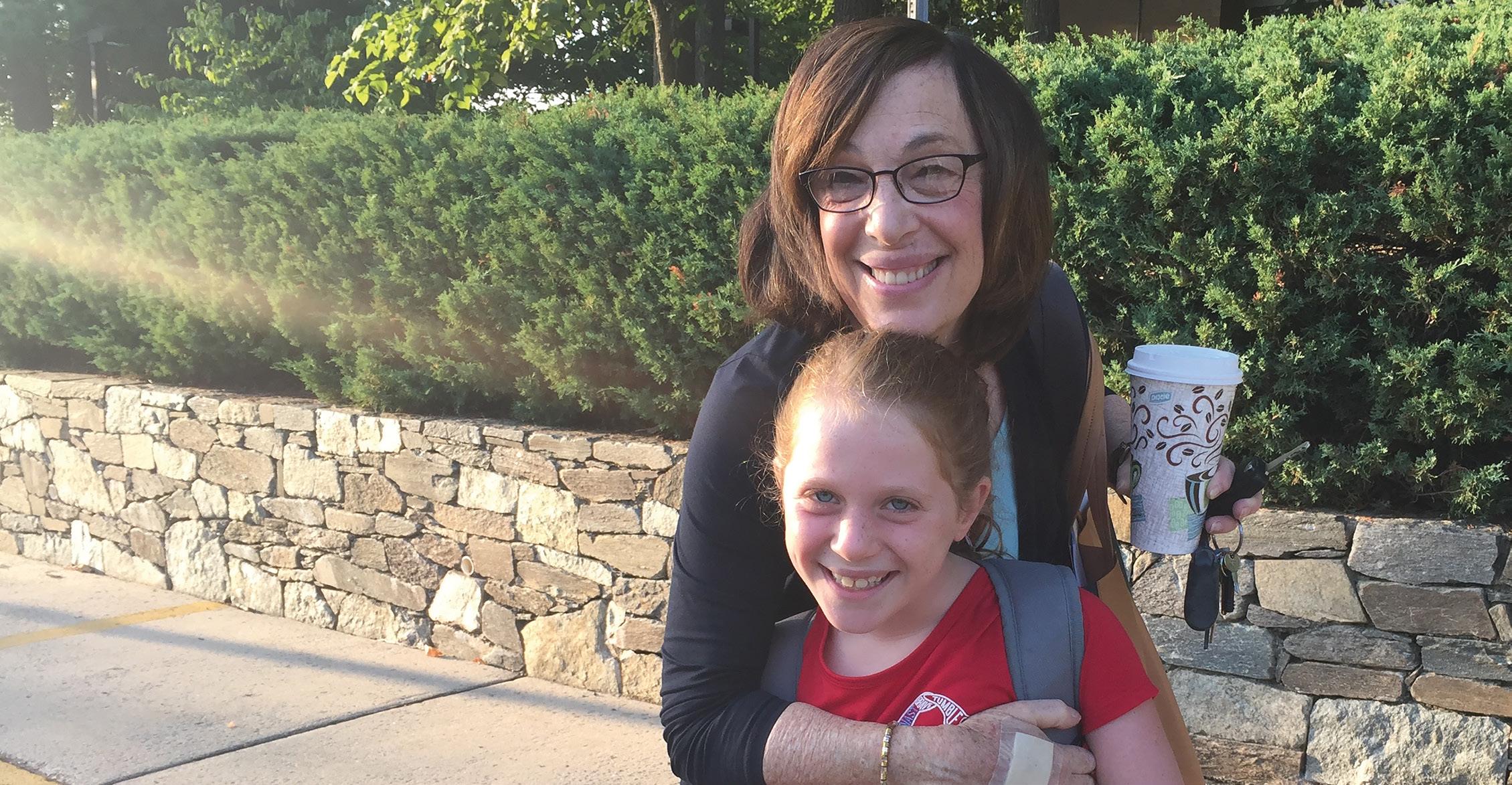
“I’m glad she’s here,” Ruby said. “G’veret Schnitzer is everyone’s grandma.”

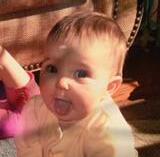
at school G’veret Schnitzer is everyone’s grandma.”
-freshman Ruby Kotoka.
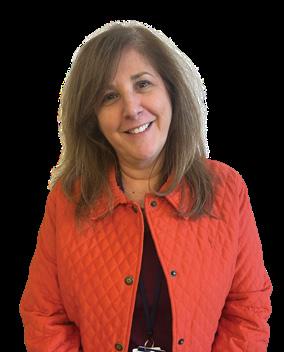
Kurlat Ares was offered the position of Middle School DEIJ coordinator at the beginning of the 2022-2023 school year. As the new coordinator, Kurlat Ares works alongside the administration and the other DEIJ coordinators to create programming for middle school students.
Although each DEIJ coordinator plans different activities and curriculums because of the different maturity levels throughout the 12 grades, they each check in on each other to make sure that what they are planning is similar and shares the same message. Kurlat Ares strives to plan activities that help educate middle schoolers on the diversity in the JDS community and ensure that students promote a welcoming environment.
Starting in 2021, CESJDS has made more of an effort to bring Diversity, Equity, Inclusion and Justice (DEIJ) into the school community and instill these values in the students. As a result, the DEIJ framework was created in both the Upper and Lower Schools. Currently, there are three DEIJ coordinators at JDS: Lower School Language Arts, Social Studies and DEIJ Coordinator Kimberly Sherk in the Lower School, World Languages Department Chair Silvia Kurlat Ares in the Middle School and photography teacher Debra White-Dilworth as the High School DEIJ coordinator.
For example, Kurlat Ares created a program for Martin Luther King Jr. Day where students learned to make paper cranes that were donated to the NIH Children’s Hospital.
“It’s [the DEIJ programming] that makes the school as a community aware of who lives in our community, who is a part of our community, who participates in the nuances or differences … it’s very personal for me,” Kurlat Ares said.
Kurlat Ares believes that the DEIJ program is an important aspect of the school’s curriculum because it helps provide spaces where students can learn about and respect the Jewish values of inclusion and pluralism.
“It’s really about being kind
and being welcoming even within our community to all possible points of view and perspective[s],” Kurlat Ares said. “It’s all about really listening because everybody has different experiences. You don’t have to agree with everybody … but to listen to others and to listen with your heart and to assume that everybody comes from a good place, I think it’s important … and that is for me, sort of the core of the whole thing.”
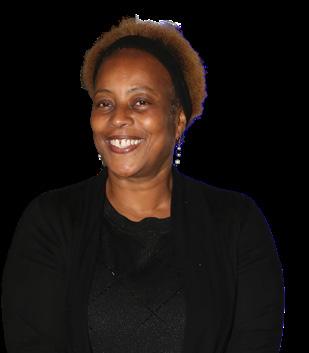
Dilworth was asked to take on the role of High School DEIJ Coordinator during the 2021-2022 school year. Although she was interested, she initially declined because it was too much for her schedule. However, this year she decided to give the position a try.
As DEIJ coordinator, Dilworth’s purpose is to see what the needs of the students and faculty are. She aims to work hard to attend to those needs and help everyone in the community feel comfortable and safe. Her goal is to not only help the community feel more open, but to also make sure that everyone in the community is educated on the principles of being accepting to all kinds of people and backgrounds.
Dilworth said that it is im-
portant to not only “plaster” the school with diversity by teaching it to students, but also by demonstrating it visually throughout the school through artwork and photography, which is her passion.
complishments for MLK day.
In addition, Dilworth is hoping to have more events that call attention to the diverse community at JDS and feature influential figures that are often not recognized. She also wants to educate students and faculty on gay rights and leaders in the LGBTQ+ movement.
Favorite Song?
“All of Me” by Billie Holiday
Favorite Season?
Best Camera?
with Ms. Dilworth Spring Nikon
“I’m not here to change anybody or to make people more diverse, because I think people are already diverse,” Dilworth said. “I think they just don’t know it. I just want to bring out that diversity, to show the world that we are already a school that has a diverse, inclusive curriculum as well.”
So far, Dilworth has built a community garden in the back of the school where anyone is able to come and plant, hang artwork and “grow their ideas.” She also created a presentation that highlighted Martin Luther King Jr. and his ac-
“People forget about diversity or inclusion and they get stuck in that same little bubble, so it’s kind of like a reminder that it doesn’t take events like George Floyd or some kind of horrific event to bring us together,” Dilworth said. “We want to be proactive instead of reactive.”
Once a leisure activity for lumberjacks, axe throwing has evolved into a fun and thrilling activity to do with family and friends.
There are a few axe throwing places in the DMV. I visited ”Kick Axe Throwing”, which opened in January of 2020, in D.C., and it surpassed my expectations.

When I first walked in, I was immediately struck by the tall stone fireplace adorned with a boar head, which gives the space a cabin-like and rustic feel. This theme carries through the whole space with the use of leather couches, animal fur rugs, plaid patterned chairs and farmhouse style light fixtures.
Once it was time for our reservation, my group was immediately greeted by our axe throwing instructor. First, the instructor guided us through some safety tips. Then, she proceeded to teach us how axe throwing works, like the proper form for our feet and arms when throwing the axe.
Axe throwing definitely doesn’t come naturally at first.
At the beginning, I was throwing the axe down and with
too little force, so it wasn’t landing anywhere near the board. Even though it was frustrating, our instructor was very supportive and gave me helpful tips and the instructor stayed with us the entire time for support.
While at first, throwing the axe felt unnatural and difficult, over time, muscle memory kicked in and it felt as simple as throwing a ball. I no longer had to look at my feet to see whether they were in the correct spot or if my axe was far enough down my back; it was instinctive.
The rush of excitement and fear that courses through your body when you throw the axe is electrifying and hearing the “thud” of the axe hitting the target is the most rewarding feeling of all. When you go bowling or throw darts, there is no element of fear or danger involved; they don’t give you the same thrill that axe throwing does.
Once we improved at throwing the axe, there were various competitive and fun games that we could play and the competition kept us more engaged and motivated throughout our time at Kick Axe. For example, we played one game with an objective to score
10 points first and another to see who could hit every ring first. All of the excitement made us hungry. Fortunately, Kick Axe has a restaurant serving appetizers and tacos, as well as a bar for those over 21. The food made it a more well-rounded experience and kept us interested the whole time we were there.
My two favorite things I tried were the “M & C bites” ($8). The macaroni and cheese bites were filled with creamy, smoky gouda cheese and perfectly cooked noodles, surrounded by a thin, crispy coating. I also found the “Big Big Pretzel” ($9) to be quite tasty. The pretzel was warm and fluffy, plus it was salted perfectly and it came with a size of spicy mustard which added a nice kick, but didn’t overwhelm the taste.
One hour of axe throwing costs $33 a person. While this may seem pricey, it is an activity that you can’t replicate at your house and it is difficult to find places where you can do it.
“Kick Axe Throwing” gives you the full experience of thrilling axe throwing, tasty food and good vibes. While at first axe throwing may seem scary, I urge you to go out of your comfort zone and try something new.
While sheer clothes have always been in the trend cycle, they’re getting their moment in the spotlight this spring. Sheer sets have grown in popularity lately as a sleepwear option, in addition to sheer tops and skirts for everyday wear. The added transparent aspect of any outfit seamlessly elevates the look. In terms of dressier shirts, there has been a rise in the popularity of sheer button-down shirts, which are generally worn with light tank tops underneath. They’re a great addition to any springtime outfit as they are light and comfortable to wear.
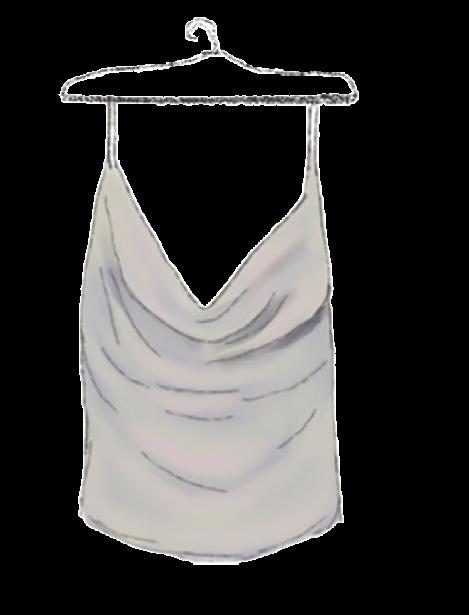
This spring, be sure to watch out for detailed denim. These items have a denim base, with appliqués or elements also made of denim. Detailed denim is generally seen in pants and jeans, but can also be seen on jackets and tube tops. Detailed denim has two layers: an appliqué on top of a denim base. The elements on the second layer can include any number of designs, from stripes and patterns to florals.

Also making a rise this spring is metallic and silver detailing. A common trend for hardware is adding chains and rings to any outfit, or layering necklaces on top of shirts and dresses. There has also been a rise in the use of fabrics with a metallic print, seen on everything from corsets to leather pants. Pairing these accessories or patterns with a plain white or black item gives an edge to any simple outfit.
Balletcore has truly hit its stride this spring. This trend includes elements of clothing often seen in a ballet class, including leg warmers atop ballet flats, tights and light flowy skirts, matched with cropped zip-up sweaters. These pieces can either be styled all together to create a delicate look, or mixed with dark oversized crewnecks, boots and silver accessories to create a more grunge look. As the weather starts to become warmer, balletcore is on pace to become a widespread trend due to the light, flowy clothing.


“Balletcore”























 Ari Werbin, SportsEditor
Ari Werbin, SportsEditor

Junior Sela Wertlieb’s current favorite album is “Give or Take” by Giveon. Wertlieb likes that the music in the album is soothing and beautiful, like in her favorite song from the album, “dec 11th.” This album is particularly special to her because it helps her calm down, as well as reminisce about memories. “This album is special to me because I went to see him in concert and it was for this album tour and I share a lot of experiences with my close friends because of this album,” Wertleib said.
While some people listen to mellow music to chill out, senior Max Schwartz said that intense rap calms him down. His favorite artist is NBA Youngboy and Schwartz listens to him almost exclusively. His favorite Youngboy album is “AI Youngboy
2,” which Schwartz says is a great album with a combination of meaningful lyrics and catchy beats. “I really enjoy this album because it makes me feel like myself. When I’m listening to this album, I just feel really good,” Schwartz said.
For some people, the music they listen to becomes a constant in their life, like senior Lindsay Shell, who listens to pop. While she loves One Direction and The Weeknd, her number one artist is Harry Styles, who she has followed since he was in One Direction. Her favorite album is the self-titled “Harry Styles.” “I feel a strong connection towards Harry and I’ve loved him since I was young. I’ve seen him in concert four times,” Shell said “Listening to his music motivates me to keep going.” Whether she’s doing homework or listening to him with friends, Shell always finds a way to enjoy his music in any scenario.
Junior Sam Sharp’s favorite artists are Drake, Juice World and J Cole. However, as he is trying to expand his music taste, his current favorite album, “SOS” by SZA, does not follow this pattern of rappers. Sharp enjoys slow music that has a pop-like feeling to it, such as his favorite song on the album, “Open Arms.” “SOS’’ helps him relax; though it reaches far out of his comfort zone, Sharp really enjoys the music and listens to it on repeat daily. “It is a good album for many different moods,” Sharp said.


Concerts are a great way to connect with your favorite music and truly experience different artists. But with so many upcoming popular artists, it’s hard to decide which concerts are worth spending your money on. Here are some of the top concerts coming up in 2023 that you should go to:

A popular artist heading to our area is Sabrina Carpenter, an American singer and songwriter who started on Disney Channel. Carpenter’s current tour, “Emails I can’t Send Tour,” will be at The Anthem in D.C. on May 14. Fan’s of Carpenter are excited to see hits such as “Nonsense” and “Because I liked a boy” performed.
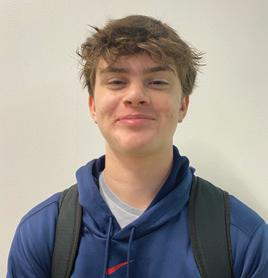
Carpenter also has the reputation of making each concert personal to the area. For instance, on her last tour, she made a personalized outro to “Nonsense,” rhyming it with each location on the tour. Tickets are $45, making this a great and affordable show to attend.
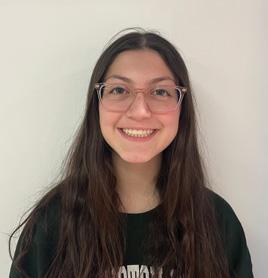
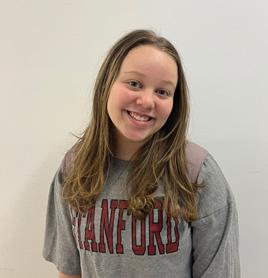

An underrated artist coming this spring is artist Vance Joy, famously known for his hit song “Riptide.” Joy will be at the Anthem on March 5, as a part of his “In Our Own Sweet Time Tour,” where he will perform songs from his new album as well as older songs. This concert is on the smaller size, considering the Anthem only holds a maximum of 6,000 people, and tickets are selling from $50 to $100.

Additionally, Lizzo will be performing in Baltimore this coming May. Her lineup also features popular rapper Latto. Lizzo is not a performer to miss, considering the history which was made at her last D.C. concert. On Sept. 27, Lizzo played President James Madison’s crystal flute, the first person to do so since Madison himself. Considering her last concert in the D.C. area was this unique, you can imagine what amazing things Lizzo has planned for this upcoming concert. Beyonce, the worldwide music sensation, is going on her first tour since 2016, making event a must-go. The “Renaissance World Tour” will be at the Fedex Field. Another well known artist coming to our area is Ed Sheeran, who will be at the FedEx Field on June 24. Sheeran hasn’t toured the U.S. since 2018, so this is an exciting opportunity to see his hit songs performed live. Some of his top charters include “Shape of You,” “Perfect,” “Bad Habit” and “Castle on the Hill.” Sheeran’s catalog has a wide variety of slow songs, along with more upbeat, pop songs, which makes for a great performance.
Concerts this year have varying prices as low as $50 with fees, making them accessible for everyone. Between all these performers and many more coming to our area, there truly is a show for everyone.

As he takes a glance at his opponents, anxious sweat drips from his face. Junior Alex Reichmann prepares himself for the 2022 USA Cycling Amateur Road National Championships. Since starting his biking career at the age of nine, Alex has been riding for Rock Creek Velo, a local cycling team based in Rock Creek Park. He has taken part in the Amateur Road Nationals the last three years and placed 29th last year.
The Rock Velo Creek team rides in the Maryland and D.C. area, training year-round to get riders prepared to compete. Through this organization, Alex competes in road racing, cyclocross and time trials. He also mountain bikes recreationally.
Road races typically take place on an open road that can range from 50 to over 100 miles. In contrast, cyclocross is when cyclers ride road bikes on a mountain course. Time trials are when racers, by themselves, ride as fast as they can for a certain amount of time or distance.
“Most people, when they think of bike racing, think of a big popular event like the Tour de France,”
Alex’s coach and exercise physiologist Susan Hefler said. “What Alex does is really not that much different.”
Hefler has been working with Alex for about a year and a half, and besides helping Alex become the best he can physically, she supports Alex psychologically.
“The training itself is one thing,” Hefler said. “But then there’s also keeping check on how the athlete’s wellbeing is doing.”
Because of the countless hours Alex spends training on the road and in the gym, he is left with a lot to manage between his schoolwork and bike work. His workout routine includes cycling for two hours six to seven days a week, including his daily bike ride home from CESJDS. In addition, he typically rides around 70 miles on weekends.
“I try to ride home from school every day so I don’t waste as much time,” Alex said. “I don’t get to go home first and then do my homework.”
Just like Alex, his family is passionate about cycling, as his sister, junior Ari Reichmann, also occasionally races. With several bikers in the family, the Reichmann household accommodates
with Alex
the sport’s needs.
“There are a lot of bikes,” Ari said. “We don’t really have special meals or anything, but there definitely are a lot of bikes.”
“Breaking Bad” Q: A:
Favorite show?
Sushi Q: A:
Favorite food?
Q: A:
Favorite song?
“Free Bird” by Lynyrd Skynyrd
“Knives Out” Q: A:
Favorite movie?
Q: A:
Favorite team?
EF EducationEasyPost
Favorite color? Blue Q: A:
Alex competes at the national level and has gone to national championships several times.
“It’s really nerve wracking because it’s the best in the country,” Alex said. “It’s one race where everyone is going to be faster than you or as fast as you, so it’s really difficult.”
To prepare for competitions as intense as nationals, Alex races a lot of smaller local events to gain more racing experience. Typically road nationals take place during the summer for approximately a week, while cyclocross nationals occur in December.
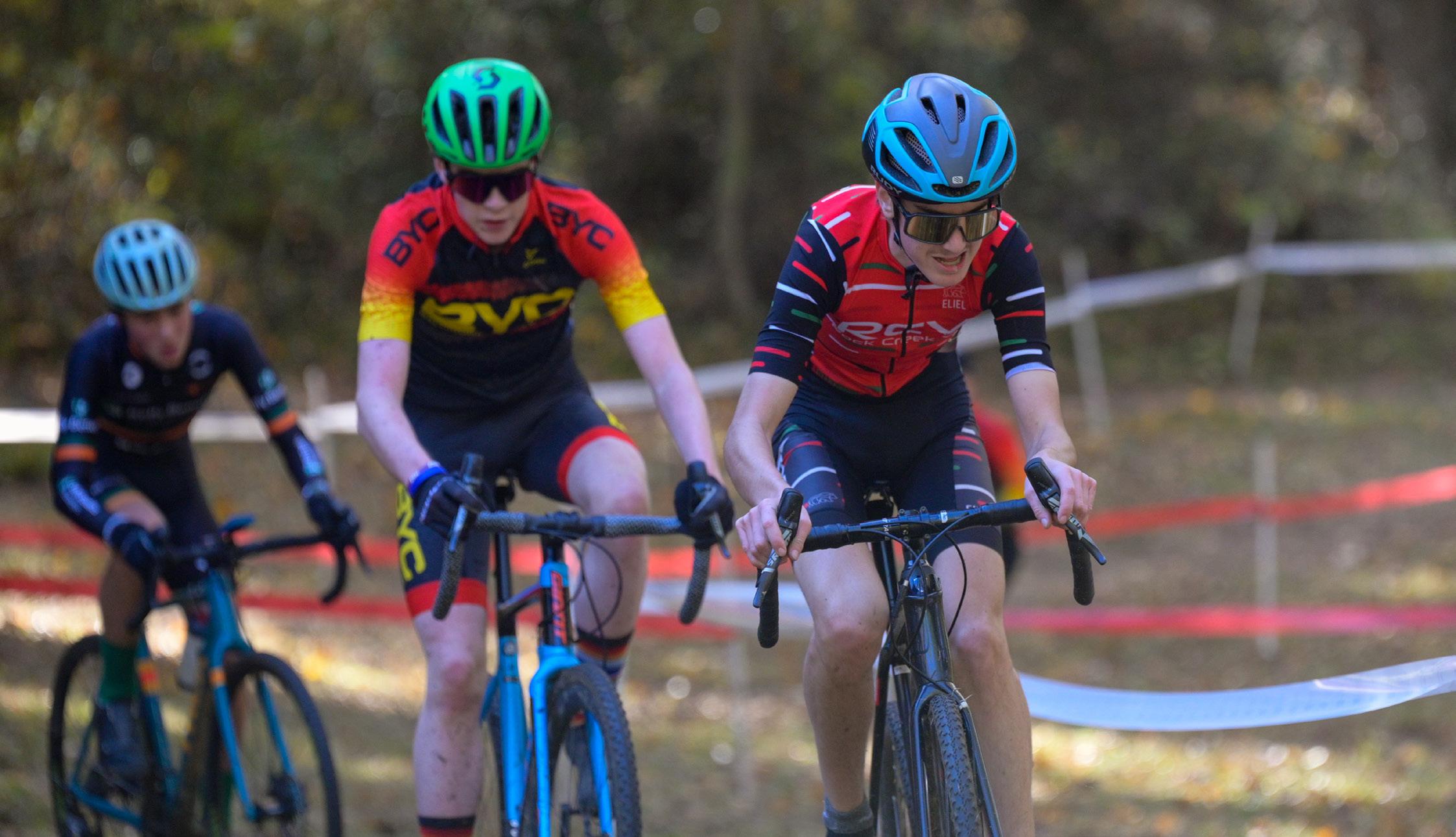
This year, Reichmann will compete in road nationals in Roanoke, Virginia in June.
“Being a great athlete takes years of work,” Hefler said. “When I think of Alex, I just think about how hardworking he is and how driven and how dedicated to the sport he is. He’s gotten some great results and I expect more to come.”
Junior cycles competitivelySasha Karasik Reporter
 Waldman SportsEditor
Waldman SportsEditor
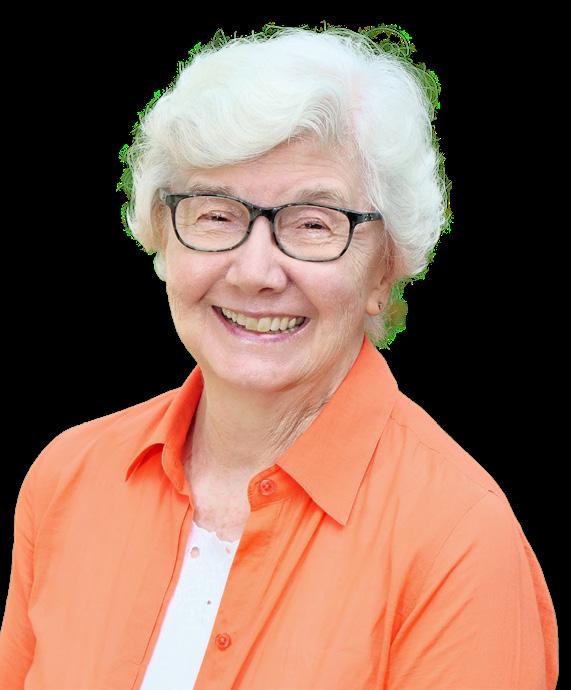
Around this time of year, millions of fan get excited about the NCAA tournament for men’s and women’s basketball known as March Madness which consists of 68 teams. The tournament is often full of upsets, buzzer-beaters and Cinderella stories (unexpected teams that makes a run).
The excitement of March Madness inevitably makes its way into schools, including basketball-crazy CESJDS. One of the ways that students and staff participate in March Madness is competing in brackets, including one run by the Sports Analytics Club. Some teachers even capitalize on students’ interest and find ways to pull the topic into the classroom.
One of the prime examples of March Madness being incorporated in a class is by Robert Shorr, a high school math teacher and the Jewish Life Chair. March Madness and the probability unit for his calculus class occur around the same time, so Shorr integrates them into his teaching, and he holds a debate within class to find the best math concept or idea that the class has learned.
“It increases math enthusiasm,” Shorr said. “I just love seeing [students] react to [math] in a different way after they spend a lot of the year complaining.”
Outside of school, the men’s tournament is available to watch on CBS, TNT, TBS and truTV,
and the women’s tournament is available on the ESPN family of networks. The 2022 NCAA tournament averaged 10.7 million viewers per game, which was a 13% increase from the previous year according to the NCAA.
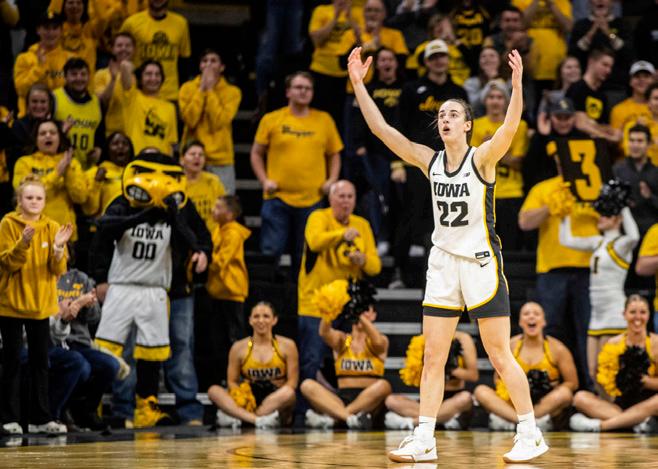
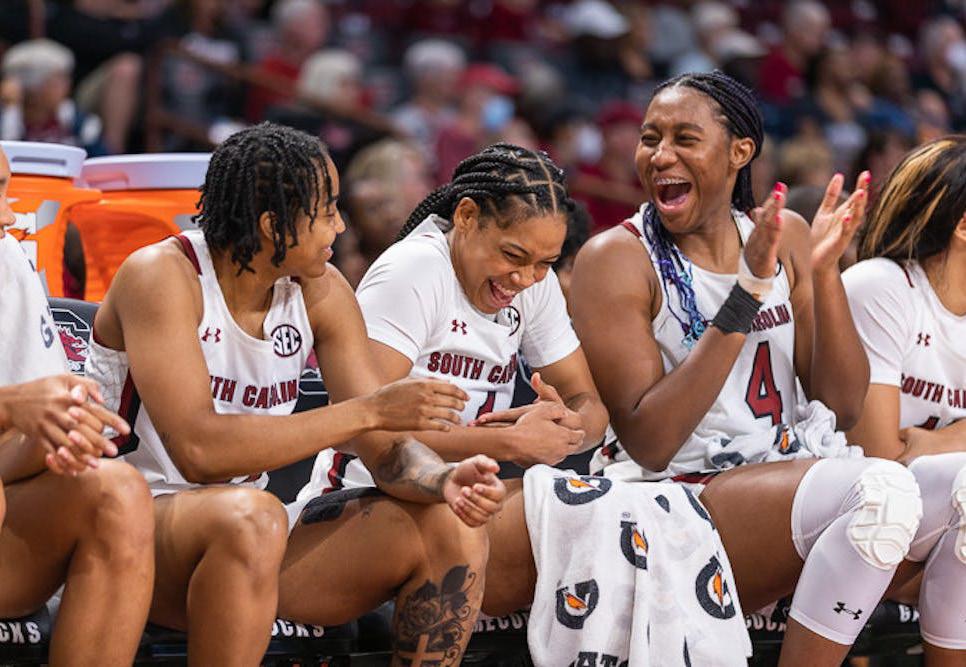
Among those viewers will be junior Ethan Safra, the president of the Sports Analytics Club.
“College basketball is just a fun sport. It’s so competitive with so many upsets,” Safra said. “It’s just so fun seeing how it turns out. You can’t even describe it.”

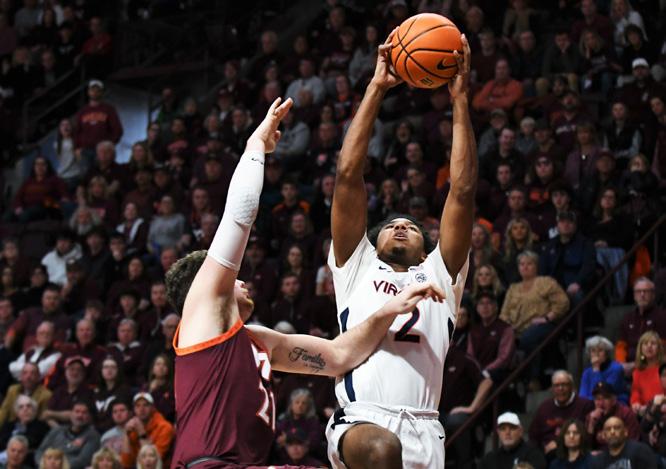
This year, the men’s tournament begins on March 14 and concludes on April 3 in Houston. The women’s tournament starts on March 15 and ends on April 2 in Dallas.
“I love that there are so many teams playing. You can just flip through all the games and there is always something happening,” sophomore Rafi Seigel said. “There are always crazy endings and upsets.”
Many people who participate in brackets don’t pay attention during the regular season, but they follow March Madness to enjoy the thrill of the tournament. People will often participate in different brackets for different groups with their friends and family.
“You do not need to know anything to start following [March Madness],” Shorr said. “It gets the not-traditional sports fans involved.”
Teams to Watch:
Players to Watch:
Top Fans:
Pick the overall winner first Know that upsets happen Trust your instinct
If you don’t know, flip a coin Rely on blind luck,it will be more funPhoto by Brodie Perry, The Daily Gamecock Photo by Kelsey Weaver, Creative Commons Photo by David Hickey, Purdue Exponent Photo by Grace Smith, The Daily Iowan Sue Rexford, Director of College Guidance South Carolina & Virginia Zach Edey & Caitlin Clark Kansas Photo by Ava Proehl The Cavalier Daily Photo taken by Freed Photography
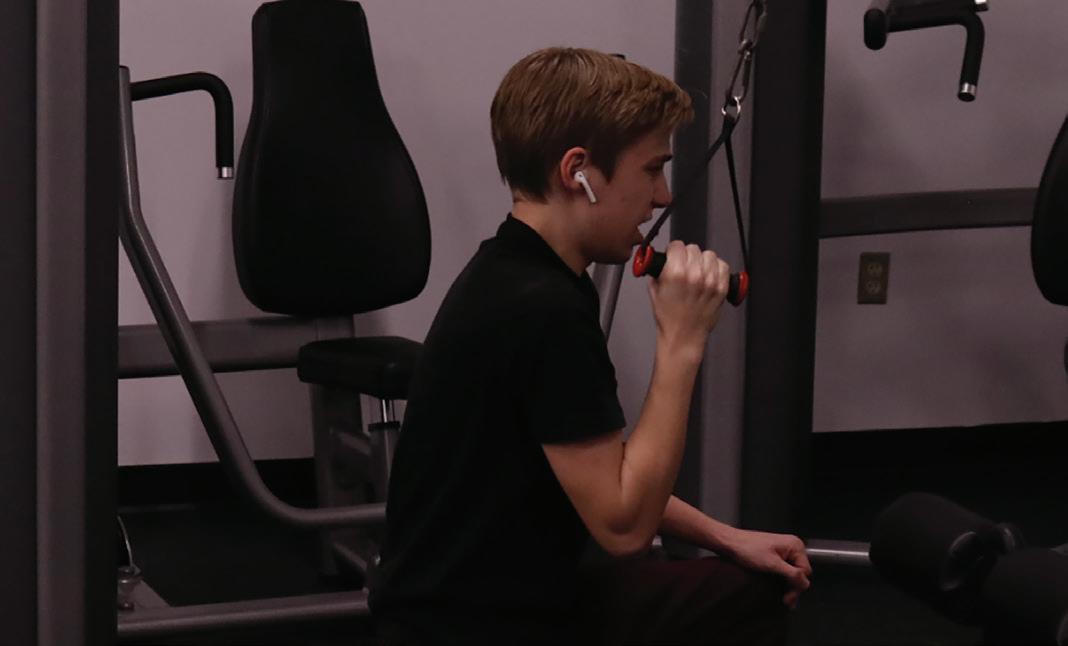 Ari Kittrie OpinionEditor
Ari Kittrie OpinionEditor
The weight room is equipped with dumbbells ranging from 10 to 60 pounds. The weights can be used for standing exercises, such as dumbbell curls. They can also be used with the many adjustable weight benches for a dumbbell bench press, which is when you lay on your back on the bench, push the dumbbells up in the air and bring them down. A favorite exercise of mine is the incline dumbbell curl. To do the exercise, you put the bench up at an incline, sit on the bench, lower your hands with the weights, and curl the weights while keeping your elbows by your ribs.
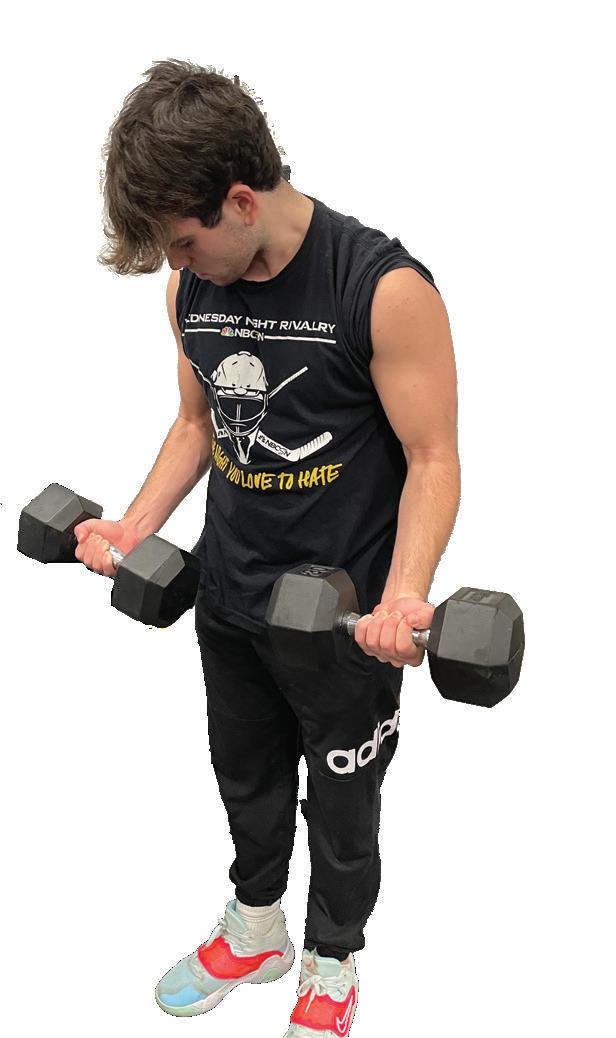

When working out, cardio is essential. It can help your heart effectively pump blood throughout your body, and it can even help lower blood pressure. The weight room is home to several machines to help you improve your cardio, such as elliptical machines, treadmills, a stationary bike and a rowing machine. These machines are great if you want to work up a quick sweat.
One machine I like is the cable crossover machine in the center of the weight room because of the variety of exercises you can do with it. An exercise you can do is tricep pushdowns, which is when someone pushes the cable down to their waist. Additionally, JDS has other various machines such as a chest press machine, which trains the pectoral muscles, a shoulder press machine, which works the shoulder muscles and a lat pulldown machine, which trains the latissimus dorsi (lat) muscles on the back.
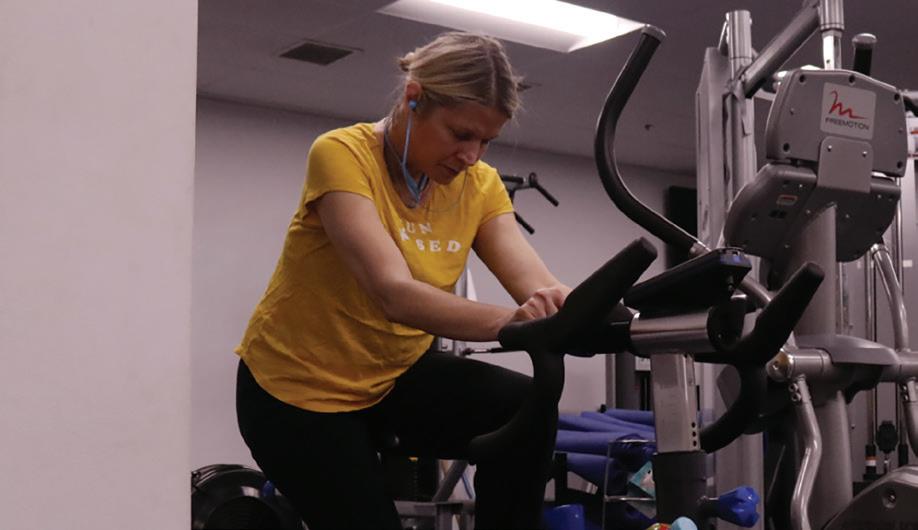
While the agility equipment is not nearly as popular as the various machines and lifting equipment, the agility equipment in the JDS weight room is perfect for people who want to improve their athleticism. Agility is all about the ability to move quickly and easily. This includes medicine balls of several weights, jump ropes and resistance bands. My favorite agility exercise is the resistance band side step. In this exercise, you put a resistance band around your leg and you sidestep while keeping your feet shoulder-length apart.
The squat racks in the front of the weight room, which can also be used to bench press, are a hotspot for gym goers. A squat is when someone bends like they are sitting in a chair to work their quadriceps and glutes. A bench press is when someone lays down on a bench with a barbell above them, and they push up the dumbbell from their chest. The plates for the barbells are weights of 2.5, five, 10, 25, 35, and 45 pounds.

QHow long have you been a personal trainer?
“I wanted to get into the world of personal training probably since 2010, but I didn’t actually go through with it until 2017. I dabbled in it and I talked to a lot of people who had done it ... I‘ve been doing this since 2017, mostly in the Baltimore and DC area.”
QWhat is your favorite fitness tip, trick or technique?

“I’ll tell people all you got to do is just move. I think one of the most underrated things that people dismiss is walking. Go outside, get sunshine and walk around. It is misunderstood as to how effective getting out in the sunshine can be, not just for your body but also for your brain.”
QDo you have any favorite exercises in the JDS weight room?
“Without question it’s the Hex bar. I’m a deadlift guy. That’s my best lift. I’ll tell you that’s the king of the exercises, but that’s probably because it’s my best lift, so I’ll brag about that. Definitely my weakest point is my squat, without question. I’ve worked really hard on that.“
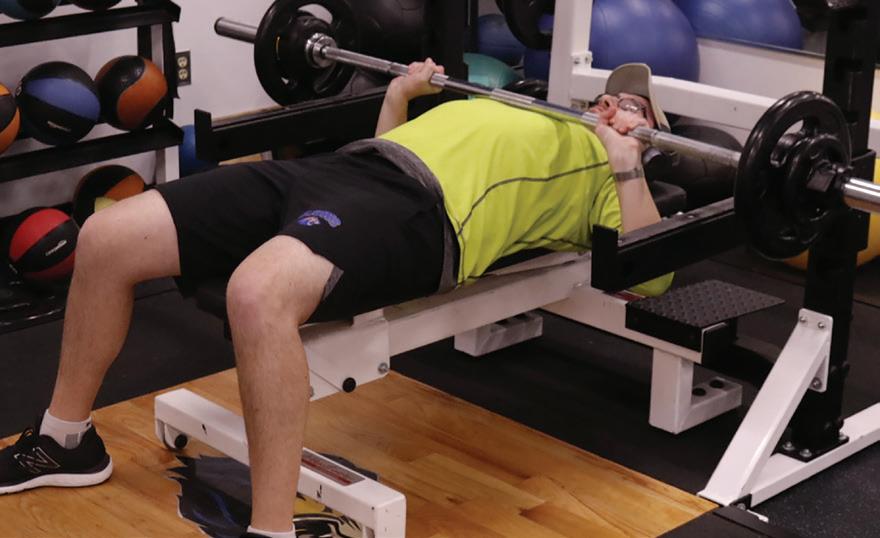
FACE OFF: Junior captain Sam Sharp takes a hit to the face to block a shot. Sharp and senior captain Ben Bass led the team throughout the season. Photo

FIGHT NIGHT: Senior Oliver Ferber and sophomore Ari Kittrie practice their wrestling skills. The wrestling team has five members, and they have competed in two different matches this season. Photo By Abby

GO WITH THE FLOAT: Sophomore Stella Muzin races to be the first to finish the race. The boys swim team came in second in the Potomac Valley Athletic Conference and the girls in fourth.

FROM THE TOP: Junior Dalya Brickman performs for the dance team. The varsity dance team preformed twice this season, once at Kabbalat Shabbat and once at halftime during a basketball game. Photo by Abby Chesman, Dimensions Yearbook.

SHOOT YOUR SHOT: Junior captain Shani Schwartz shoots the ball during the Lion’s second match against Berman. Schwartz was the leading scorer for the team this season helping lead the team alongside senior captains Talia Sporkin, Yuval Klien and Devorah Freeman. Photo by Yossi May.
 by Abby Chesman, Dimensions Yearbook.
Photo by Coby Malkus, Dimensions Yearbook.
Chesman, Dimensions Yearbook.
Compiled by GiGi Gordon
by Abby Chesman, Dimensions Yearbook.
Photo by Coby Malkus, Dimensions Yearbook.
Chesman, Dimensions Yearbook.
Compiled by GiGi Gordon